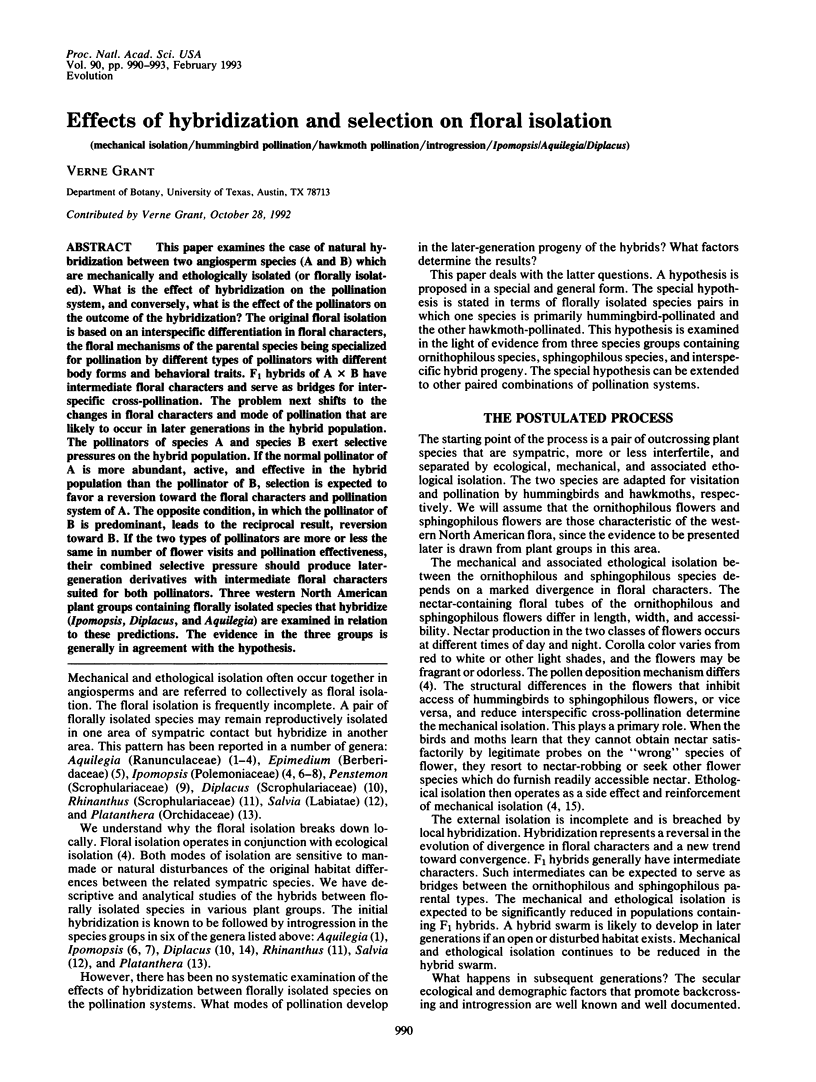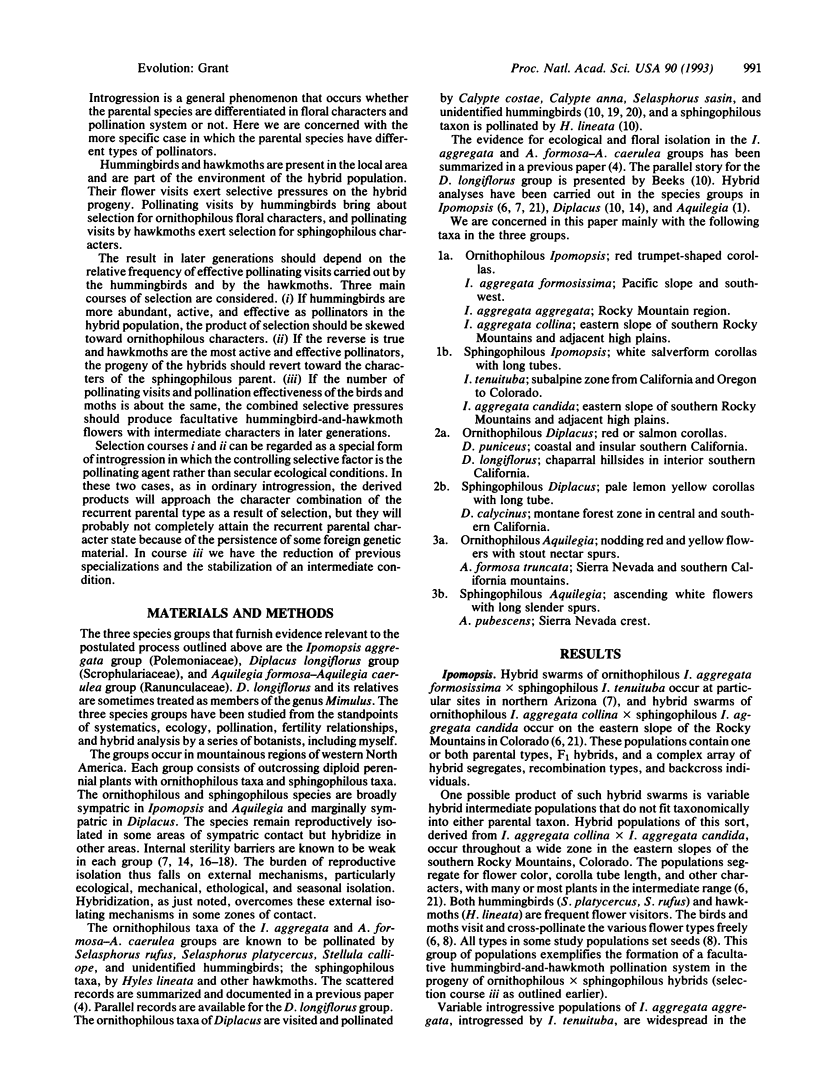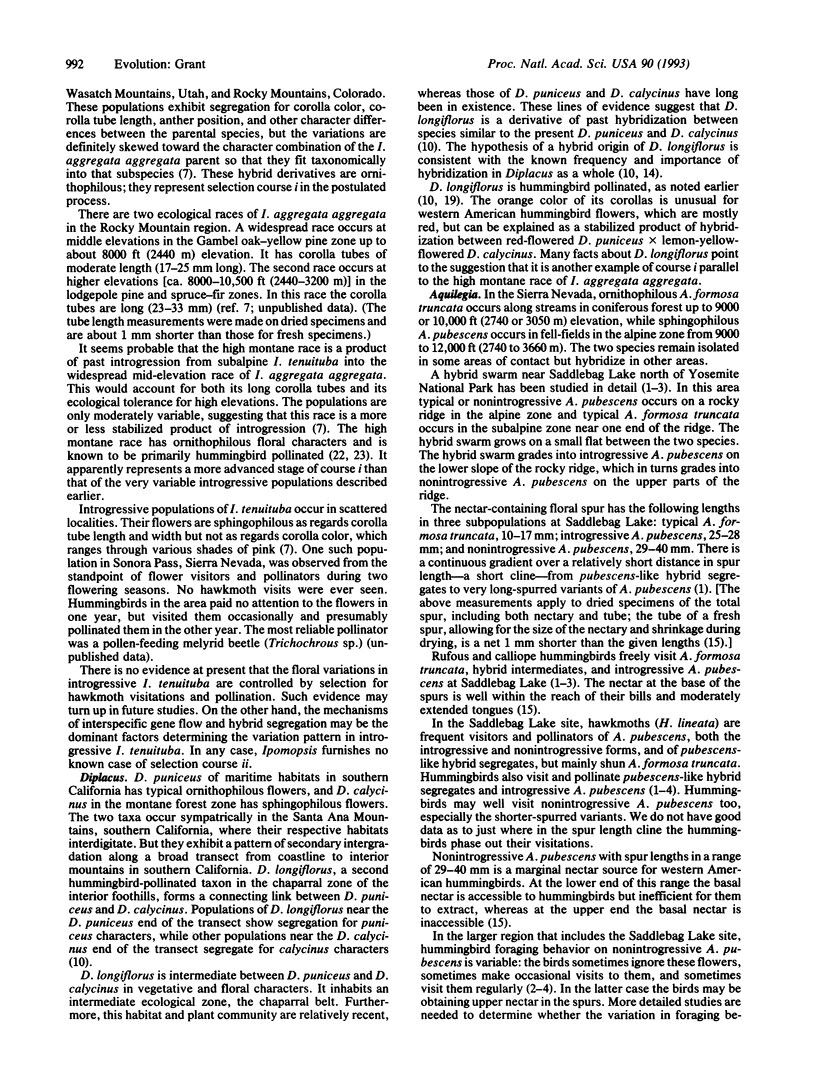Abstract
This paper examines the case of natural hybridization between two angiosperm species (A and B) which are mechanically and ethologically isolated (or florally isolated). What is the effect of hybridization on the pollination system, and conversely, what is the effect of the pollinators on the outcome of the hybridization? The original floral isolation is based on an interspecific differentiation in floral characters, the floral mechanisms of the parental species being specialized for pollination by different types of pollinators with different body forms and behavioral traits. F1 hybrids of A x B have intermediate floral characters and serve as bridges for interspecific cross-pollination. The problem next shifts to the changes in floral characters and mode of pollination that are likely to occur in later generations in the hybrid population. The pollinators of species A and species B exert selective pressures on the hybrid population. If the normal pollinator of A is more abundant, active, and effective in the hybrid population than the pollinator of B, selection is expected to favor a reversion toward the floral characters and pollination system of A. The opposite condition, in which the pollinator of B is predominant, leads to the reciprocal result, reversion toward B. If the two types of pollinators are more or less the same in number of flower visits and pollination effectiveness, their combined selective pressure should produce later-generation derivatives with intermediate floral characters suited for both pollinators. Three western North American plant groups containing florally isolated species that hybridize (Ipomopsis, Diplacus, and Aquilegia) are examined in relation to these predictions. The evidence in the three groups is generally in agreement with the hypothesis.
Full text
PDF



Selected References
These references are in PubMed. This may not be the complete list of references from this article.
- Grant A. K. The physician and the private patient. Aust N Z J Med. 1976 Apr;6(2):103–105. doi: 10.1111/j.1445-5994.1976.tb03299.x. [DOI] [PubMed] [Google Scholar]
- Grant V. Floral isolation between ornithophilous and sphingophilous species of Ipomopsis and Aquilegia. Proc Natl Acad Sci U S A. 1992 Dec 15;89(24):11828–11831. doi: 10.1073/pnas.89.24.11828. [DOI] [PMC free article] [PubMed] [Google Scholar]
- Grant V. Selection for vigor and fertility in the progeny of a highly sterile species hybrid in gilia. Genetics. 1966 Apr;53(4):757–776. doi: 10.1093/genetics/53.4.757. [DOI] [PMC free article] [PubMed] [Google Scholar]
- Grant V., Temeles E. J. Foraging ability of rufous hummingbirds on hummingbird flowers and hawkmoth flowers. Proc Natl Acad Sci U S A. 1992 Oct 15;89(20):9400–9404. doi: 10.1073/pnas.89.20.9400. [DOI] [PMC free article] [PubMed] [Google Scholar]


